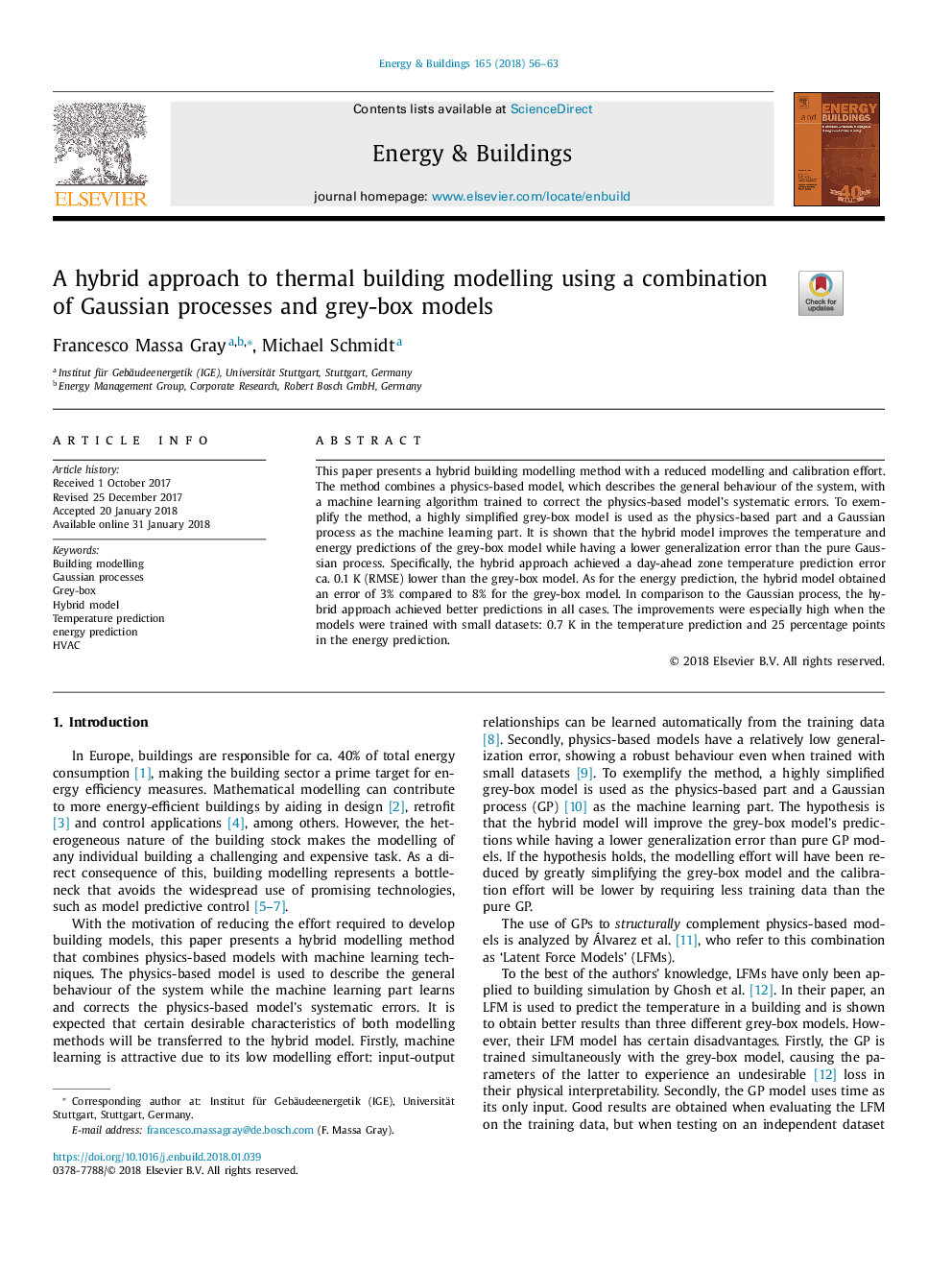| Article ID | Journal | Published Year | Pages | File Type |
|---|---|---|---|---|
| 6728495 | Energy and Buildings | 2018 | 8 Pages |
Abstract
This paper presents a hybrid building modelling method with a reduced modelling and calibration effort. The method combines a physics-based model, which describes the general behaviour of the system, with a machine learning algorithm trained to correct the physics-based model's systematic errors. To exemplify the method, a highly simplified grey-box model is used as the physics-based part and a Gaussian process as the machine learning part. It is shown that the hybrid model improves the temperature and energy predictions of the grey-box model while having a lower generalization error than the pure Gaussian process. Specifically, the hybrid approach achieved a day-ahead zone temperature prediction error ca. 0.1Â K (RMSE) lower than the grey-box model. As for the energy prediction, the hybrid model obtained an error of 3% compared to 8% for the grey-box model. In comparison to the Gaussian process, the hybrid approach achieved better predictions in all cases. The improvements were especially high when the models were trained with small datasets: 0.7Â K in the temperature prediction and 25 percentage points in the energy prediction.
Keywords
Related Topics
Physical Sciences and Engineering
Energy
Renewable Energy, Sustainability and the Environment
Authors
Francesco Massa Gray, Michael Schmidt,
